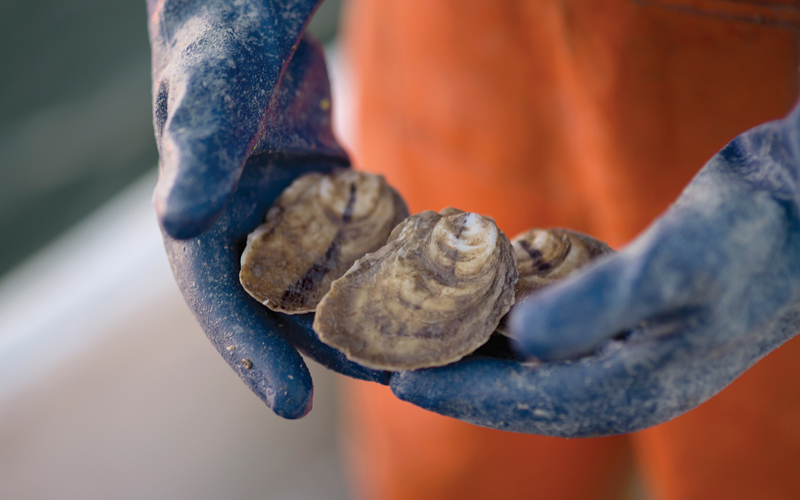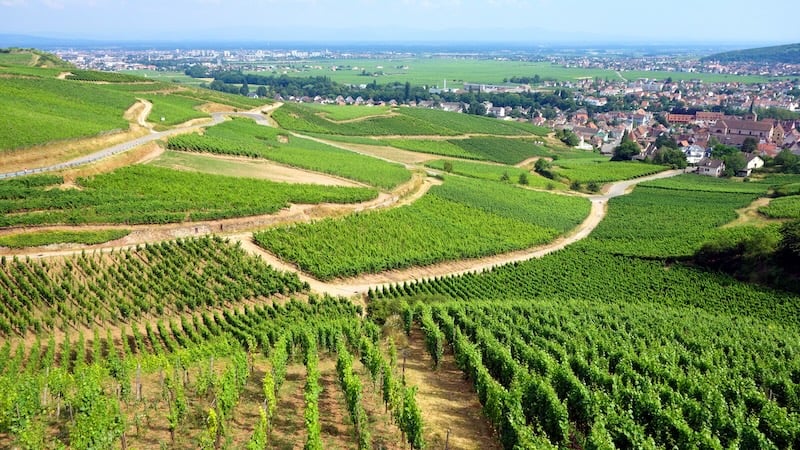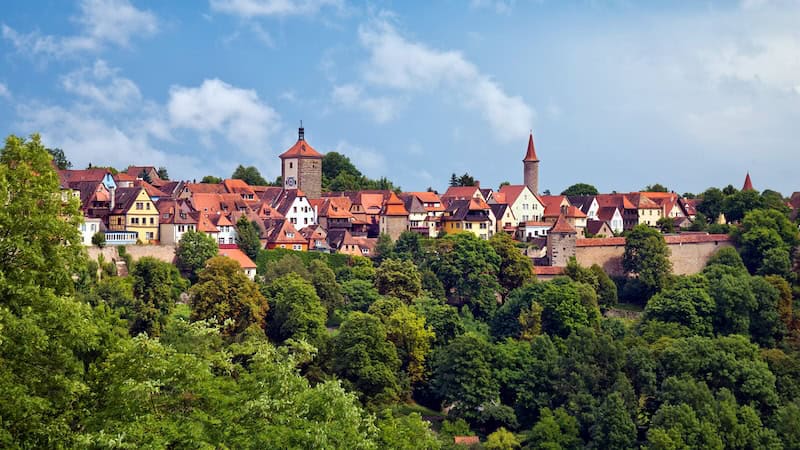A Future for Tangier Island
Growing an Underwater Crop

Allen Parks loves the island he grew up on and for years has woken up at 4:30 each morning to work the waters surrounding it. As a Tangier fisherman and crabber, the 38-year-old now has a new focus – farming oysters that he believes are good business for Tangier and may offer hope for the future of the island.
“I love that after years of working these waters and hunting down something, now I’m actually growing something. It’s such a positive direction we’re moving in. Even in hard times I have had faith in the Lord and kept my eyes on the goal.”
Allen explained late one evening, after his 2-year-old was in bed, that the top-water oyster system coupled with a group of investors who are often willing to work by his side make farming for Tangier Island Oyster Co. different than other operations. “I don’t much have a taste for seafood, but everyone tells me our oysters are the saltiest, best-tasting oysters around.”
INVESTING IN THE ISLAND’S FUTURE
With a population of fewer than 500, remote Tangier Island may seem an unlikely place for a group of investors to hang a shingle. Says Richmonder Clare Bradshaw, one of the company’s 18 investors, “There’s something really special about the island; it’s just like walking back in time. When I heard about the possibility of launching an oyster farm there, I was absolutely behind it.” Admittedly a silent partner, Bradshaw’s desire for this effort to succeed goes well beyond dollars and cents.
That sentiment is shared by other investors. “This is a passion project for many of us – one that produces terrific-tasting oysters while bringing attention to and hopefully doing some good for the island,” says William Darr.
Craig Suro, one of the company’s founders, said he and co-founder Tim Hickey were first drawn to the uniqueness of Tangier and the people who live there. The idea for the oyster company came second.
As he focuses on distribution, he adds, “Chefs have the best reactions when they try the oysters. They’ll say, ‘These aren’t Chesapeake oysters!’ But of course they are! Ours are just different. Better.” In Richmond, Shagbark and Rappahannock Restaurant serve the oysters.
On a high from learning the day before that Wegmans was selling Tangier oysters, Craig admitted that while this was a feather in Tangier Island Oyster Co.’s cap, the company has a long way to grow. Last year, a massive ice storm sent hundreds of thousands of oysters swirling in the bay, leaving a frustrated team in its wake. “People and organizations all up and down the region pitched in and helped us wrangle up the lost cages. We had oyster cages people gathered for us down in North Carolina. It was a big hit. But it was also incredibly powerful to see the good will of so many who went out of their way to help us out. That helped us get back up and back to work.”
The team has bounced back, and although they’re not seeing sizable profits yet, they’re receiving notable accolades. In July, First Lady Dorothy McAuliffe and Secretary of Agriculture and Forestry Todd Haymore officially proclaimed Tangier/Middle Bay as the commonwealth’s eighth oyster region.
As Allen mentioned, several on the Tangier team trek from around Virginia to tend to the spat (the young), work the oysters and cut PVC pipe to protect the baskets. “We had a year and a half before we ever had a paycheck,” says Allen. “Lots of folks weren’t optimistic, but I am. I want a future for this island.”


